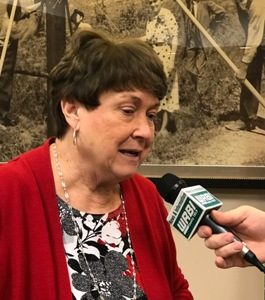 Oldenburg, In. — Corn and soybeans are the two main crops planted in Indiana every year. The use of cover crops has been on the rise, which greatly reduces soil erosion and provides nitrogen and phosphorus for the soil.
Oldenburg, In. — Corn and soybeans are the two main crops planted in Indiana every year. The use of cover crops has been on the rise, which greatly reduces soil erosion and provides nitrogen and phosphorus for the soil.
In 2017, Indiana farmers planted 970,000 acres of cover crops, according to a recent survey.
Cover crops include many types of vegetation like annual ryegrass, crimson clover, oats and oil-seed radishes, among other plants. Unlike other crops, which are planted to obtain a yield, cover crops are planted to improve fields and reduce erosion. For example, they help improve soil quality, fight bacteria and weeds, and prevent nutrients and sediment from running off farmland into bodies of water.
In fact, the cover crops planted in our state in 2017 prevented over 4.3 million pounds of nitrogen and phosphorus and 1.2 million tons of sediment from polluting our waterways, according to the Indiana State Department of Agriculture.
Below are the total number of acres with cover crops and cereal grains in my seven Senate District counties, according to the 2017 County Cover Crop and Tillage Reports.
Decatur County: 7,780 acres
Fayette County: 1,821 acres
Franklin County: 5,467 acres
Henry County: 6,685 acres
Ripley County: 10,804 acres
Rush County: 18,990 acres
Shelby County: 6,100 acres
The thousands of acres of cover crops planted in these communities have so many positive effects on Indiana farmland, and I am pleased more and more farmers are taking advantage of them.
For more information on cover crops and the survey, visit www.in.gov/isda.



